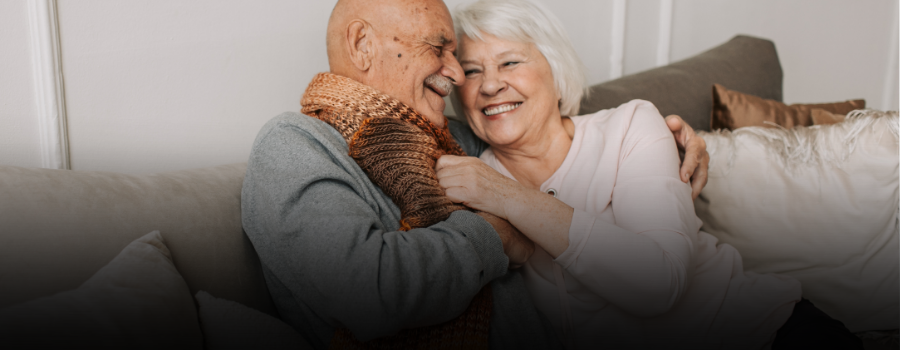As people age, their mobility and needs can change. Whether you're planning to age in place or want to help a loved one stay comfortable and safe at home, there are several simple and effective ways to make your home more accessible. By making a few thoughtful modifications, you can ensure that your home remains a comfortable, safe, and functional space for years to come.
1. Install Grab Bars and Handrails
Falls are a common risk for seniors, especially in places like bathrooms and stairways. Installing grab bars in the shower, near the toilet, and along stairways can provide vital support. These small additions help people transition from sitting to standing and offer stability during everyday movements.
-
Shower & Tub: Install grab bars on the inside and outside of the tub or shower for balance.
-
Stairs: Add handrails on both sides of the staircase for extra support while climbing or descending.
2. Widen Doorways
As we age, mobility aids like walkers and wheelchairs may be needed. Standard doorways (30 inches wide) can make it hard to navigate through rooms, but widening them to 36 inches makes movement much easier. Widening doors is especially useful for ensuring easy access to important spaces like bathrooms, bedrooms, and hallways.
3. Add a Ramp for Easy Entry
If your home has steps at the entryway, a ramp can make a world of difference. Ramps provide easier access for seniors, especially for those using wheelchairs or walkers. The ramp should have a gentle slope, and it’s important to choose durable, weather-resistant materials like textured concrete or rubber to avoid slips.
4. Improve Lighting for Safety
Good lighting is essential for any home, but it’s especially important as we age. Poor lighting can increase the risk of trips and falls, so ensuring well-lit pathways is crucial. Here are a few ideas:
-
LED Lights: Bright, energy-efficient LED lights should be installed in key areas like hallways, stairs, kitchens, and bathrooms.
-
Motion-Sensor Lights: These are great for night-time use and ensure lights turn on automatically when someone enters the room.
-
Nightlights: Install nightlights in hallways, bathrooms, and kitchens to guide you safely through your home at night.
5. Modify the Kitchen for Accessibility
The kitchen is one of the most-used spaces in a home, and it’s also where safety matters most. Modifying the kitchen can make cooking and cleaning easier for seniors:
-
Lowered Countertops: If needed, lower your countertops to a height that’s accessible for someone seated or using a wheelchair.
-
Pull-Out Shelves and Drawers: These make it easier to reach items without bending down or stretching.
-
Easy-to-Use Appliances: Invest in appliances with front-facing controls and simple-to-read settings, so they're more accessible and user-friendly.
6. Make the Bathroom Safer and More Accessible
The bathroom can be one of the trickiest places for seniors, as the risk of slipping is higher. Here are a few modifications that can make the bathroom safer:
-
Non-Slip Flooring: Consider installing non-slip tiles or vinyl to reduce the risk of falls when wet.
-
Walk-In Shower: Replace a traditional bathtub with a walk-in shower that has no threshold. These showers are easier to enter and exit and safer to use.
-
Adjustable Showerheads: Install a handheld showerhead that can be used while seated or standing, making it easier to adjust to different needs.
7. Keep Pathways Clear
In addition to specific modifications, it’s important to ensure that there are clear paths throughout the home. This will make it easier for seniors to move around without obstruction, reducing the risk of trips or falls.
-
Clear Furniture and Rugs: Move furniture out of pathways to allow for easy navigation. Remove any rugs or mats that could be tripping hazards.
-
Wide Passageways: Arrange furniture so that there’s enough room to move around comfortably, especially for those using mobility aids like walkers or wheelchairs.
8. Accessible Bedroom and Living Areas
Ensuring that the bedroom and living room are accessible is also essential. Here are a few simple changes to make these spaces more senior-friendly:
-
Bed Height: Adjust the bed’s height so it’s easy to get in and out of. A bed that’s too low or too high can cause difficulty for seniors with limited mobility.
-
Furniture Arrangement: Arrange furniture to create open spaces and minimize obstacles. Keep frequently-used items, like remotes or reading glasses, within reach to avoid unnecessary bending or stretching.
Conclusion
Making your home accessible doesn’t always require expensive renovations. By adding a few simple modifications like grab bars, widened doorways, ramps, and better lighting, you can ensure your home is safe and comfortable for aging in place. These changes promote independence and reduce the risk of accidents, allowing you or your loved one to live in the home with confidence and ease. If you’re considering any of these modifications, consult with a professional to ensure the changes best meet your needs.
Rozi Dover
Your Trusted Real Estate Expert in Auburn and Opelika, Alabama
Phone: +13346630077
Email: rozi@mindspring.com
Website: www.auburn-opelikahomes.com


Leave A Comment